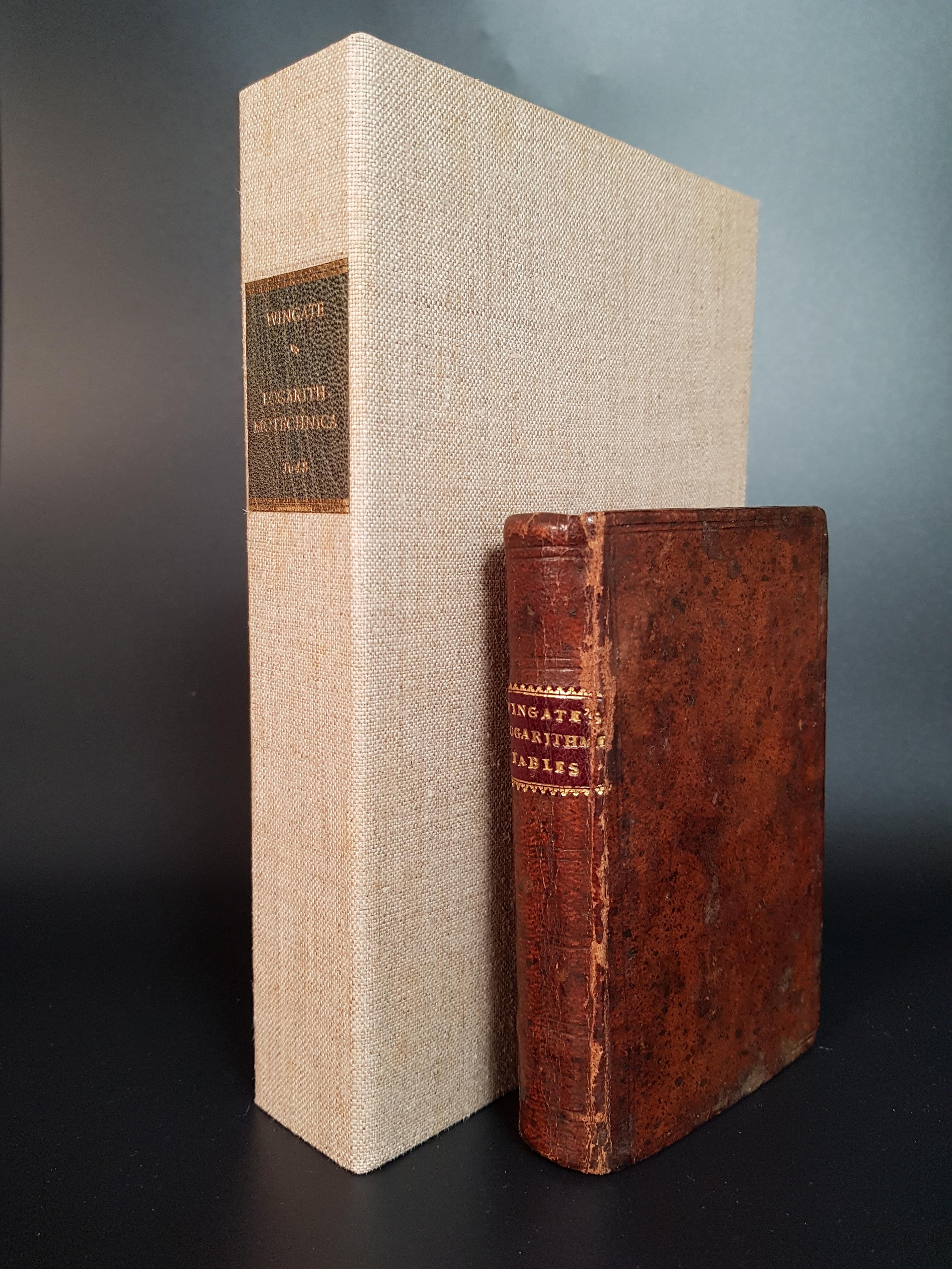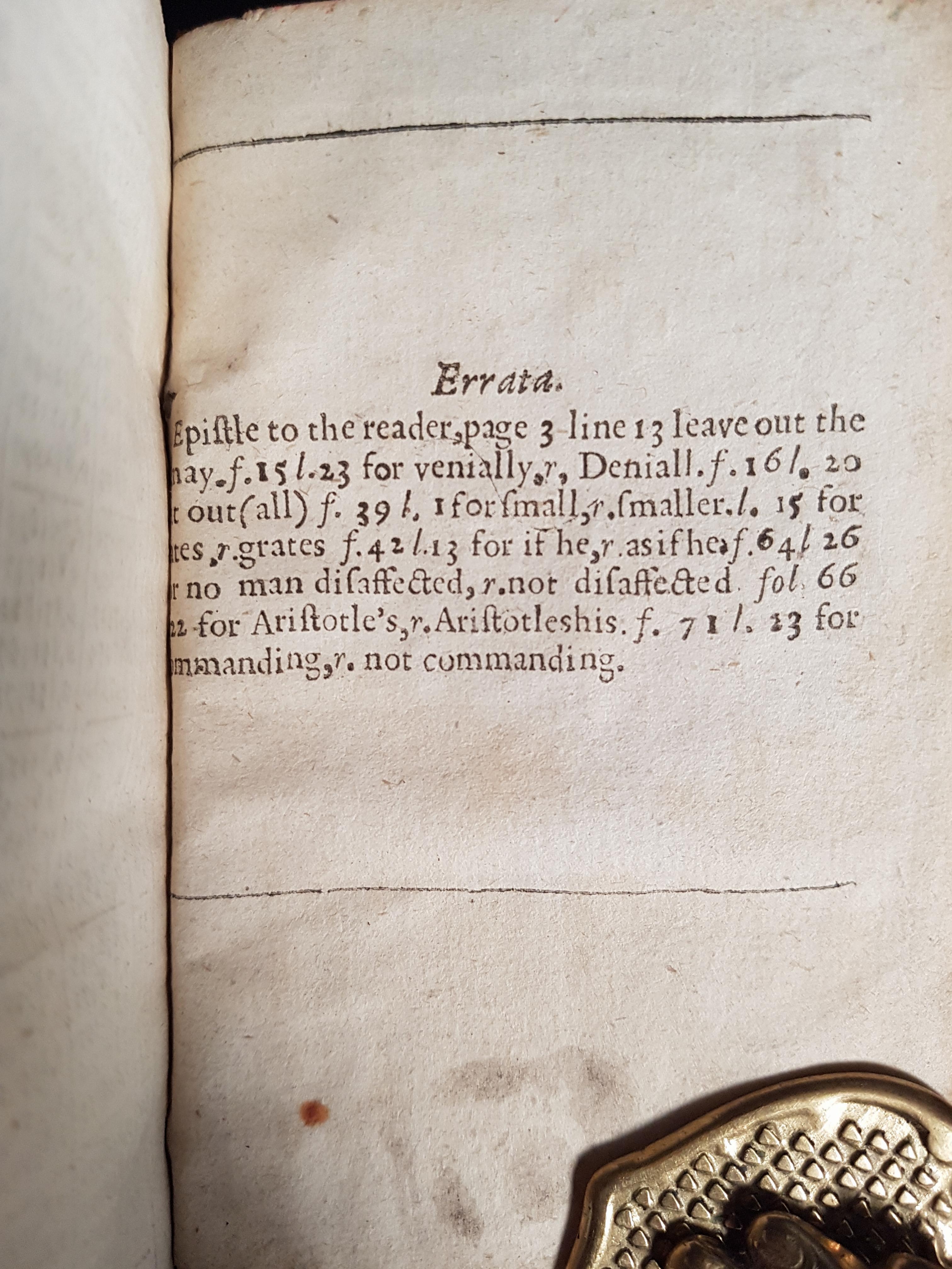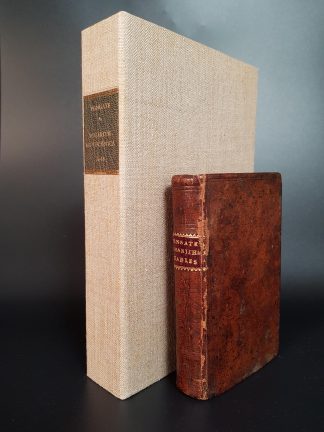WINGATE, Edmund
or the construction and use of the logar-ithmeticall tables by the helpe whereof, multiplication is performed by addition, division by subtraction, the extraction of the square root by bipartition, and the cube root by tripartition, &c.. [with] Une table logarithmetique par laquelle on peut trouver le logarithme de quelque numbre que ce soit dessous 400000
1) London, Miles Flesher, 1648 2) London, [Printed by M. Fletcher], 1635£2,950.00
24mo. Two works in one. pp. [viii], 135, [i], [clvi]. A–F12, a–F12, G6, ()1. Roman and Italic letter, text within box rule. Floriated woodcut initials, typographical ornaments, mathematical woodcuts in text, ‘Strathnaver’ in near contemporary hand on ff-ep and at head of t-p., Erwin Tomash’s label on front pastedown. Light age yellowing. A very good copy, crisp and clean in contemporary speckled calf, covers bordered with a double blind rule, spine double ruled in compartments, red morocco label gilt, e.e.r.
A very good copy of the third edition of this rare work on logarithms. In 1624, when Wingate was in France, he produced a short tract on logarithms in which he indicates: ‘I…had the happinesse to be the first transporter of the use of these inventions into those parts.’ In 1626, he translated his French work into English and it became the first edition of this book. In the preface he indicates that it is nothing more than a condensation of the work of Henry Briggs’ Arithmetic logarithmica, which he must have acquired shortly before he left London as it was only published in 1624. This is the third edition (all of them edited by Wingate). It consists of a series of twenty-eight problems covering everything from simple multiplication to spherical geometry, followed by an appendix containing another forty-six problems in which he briefly discusses, usually in one sentence, the rule for finding the answer. The tables were apparently printed separately, perhaps for a French edition in 1635. They have French titles on both the tables and the column headings. The paper also has a different watermark from that used to print the text. Wingate’s work on arithmetic ‘Of natural and artificial arithmetick’ was used in many English schools and remained in print for more than a century. It established Wingate’s name as a writer of texts and did more for his reputation than any of his more advanced works on logarithms or instruments.
Wingate was born in Yorkshire and studied law at Oxford. Although he remained a lawyer, he was an avid amateur mathematician and writer of mathematical texts. He spent twenty-six years in Paris, where, among other things, he was tutor to the French princess Henrietta Maria. It was during his early days in Paris that he published two works (Construction, description et usage de la règle de proportion, 1624, and Arithmétique logarithmique, 1626) that introduced logarithms to the French. He returned to England in 1650 and entered politics but continued to write on mathematical subjects.
“After groundbreaking publications by the British mathematicians John Napier and Henry Briggs, Edmund Wingate, an English mathematician who was temporally based in Paris, emphasised the power of the combination of decimal fractions and common logarithms – that is to say, logarithms to the base of 10 – to assist practitioners, such as surveyors navigators and carpenters , to make the kind of calculations that they were likely to need to make in their daily workplace. On returning to England, Wingate wrote a text designed for use in schools, in which he advocated the application of decimal fractions and logarithms as a way of simplifying calculations. M.A. Clements ‘Thomas Jefferson and his Decimals 1775–1810.’
1) ESTC R219767. Wing W3018A. Tomash & Williams W97 (This copy). 2) ESTC S95890. STC 25851.5. Tomash & Williams W98. (this copy)In stock








